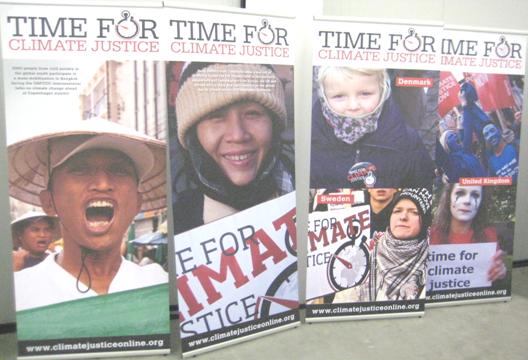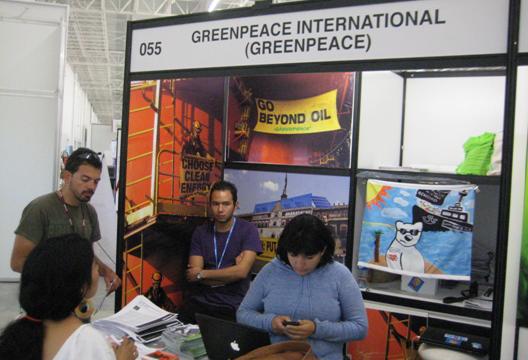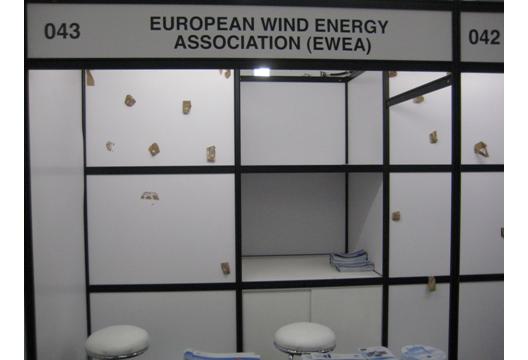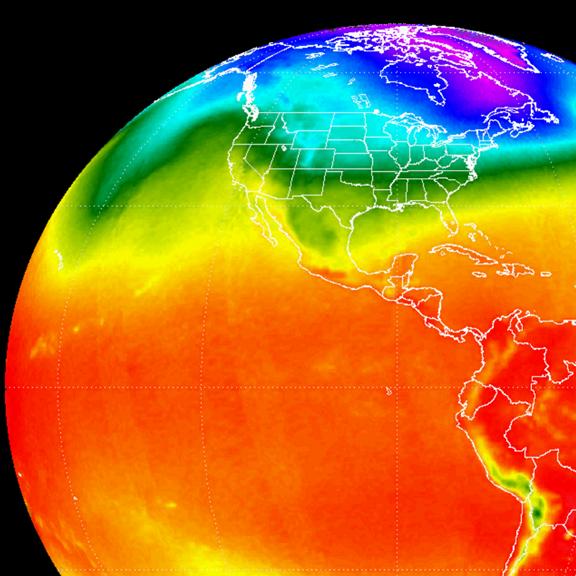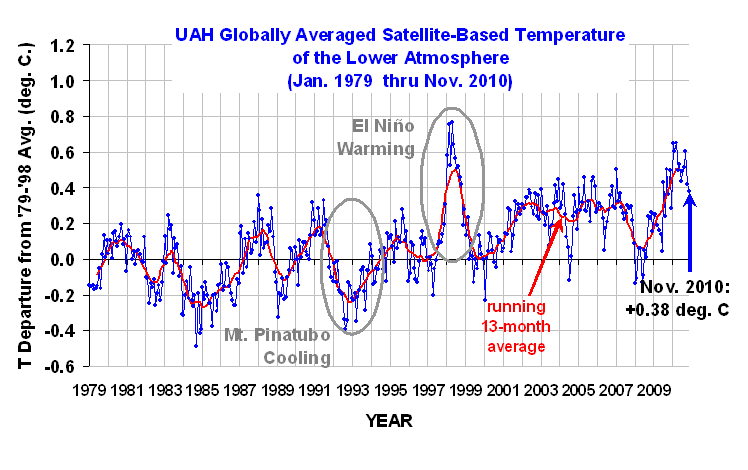What follows is a mini-debate by e-mail during the last 3 weeks between myself and Andy Dessler over the question of whether cloud feedbacks in the climate system are positive or negative.
Last night, Andy Revkin suggested that I post it. I believe this e-mail exchange is rather unusual during a time when scientists arguing over global warming more often spar with sound bites in the popular press rather than personally between themselves.
This was partly the result of my somewhat scathing post on December 9, 2010 regarding Science recently publishing Andy’s paper claiming positive cloud feedback. (I was not asked to peer review Andy’s paper even though I have published the most recent and directly comparable paper on the subject.)
The e-mail debate, which is still in progress, has been cc’d to a variety of people, the more recognizable addresses being: mann@meteo.psu.edu; gschmidt@giss.nasa.gov; trenbert@ucar.edu; jgillis@nytimes.com; rkerr@aaas.org; santer1@llnl.gov; revkin@optonline.net; rlindzen@mit.edu; olivermorton@economist.com; ekintisch@aaas.org; p.campbell@nature.com; john.christy@nsstc.uah.edu; mlemonick@climatecentral.org; eric.berger@chron.com; jhalpern@howard.edu.
The exchange of e-mails is listed in chronological order, following an initial e-mail alert from Scott Mandia of the Climate Science Rapid Response Team of my blog post on Andy’s paper. I am not posting Scott’s e-mail in respect of his privacy.
I entered the e-mail discussion after Scott criticized my my blog post implying that Andy’s paper being published by Science on the last day of the Cancun climate conference was motivated by more than just science. I have italicized where one of us quotes from an earlier e-mail.
SPENCER (11 December, 2010, #1 of 2):
In retrospect, my questioning of the timing has distracted from the central science issues, and was a bad move on my part. My apologies to Andy.
-Roy
SPENCER (11 December, 2010, #2 of 2):
…but I stand by my assertion that Andy’s paper is a step backwards for science. I would debate him or anyone else on this issue in a public or professional forum at any time.
I would be happy to submit a response to Science if I thought it had “a snowball’s chance”, but many of us have learned over the years that the editorial process there is quite biased on the subject of anthropogenic global warming.
BTW, I have stopped corresponding with Andy after he made public our e-mail exchange without asking me.
-Roy Spencer
DESSLER (11 December, 2010):
Roy-
I certainly accept your apology.
…but I stand by my assertion that Andy’s paper is a step backwards for science. I would debate him or anyone else on this issue in a public or professional forum at any time.
I ACCEPT! Let’s start immediately. Since you’re willing to do this essentially anywhere and anytime, I say we do this via e-mail. And since you want this to be public, I pledge to post the entirety of all of our e-mail correspondence on a blog that everyone can read (and since you also have copies of our correspondence, you’ll also be free to post it).
If you accept (and I don’t see how you can refuse given your statement above), then you can begin by answering this e-mail I sent to you yesterday:
Hi Roy-
I wanted to follow up on our interesting discussion. My main question involves your theory of cause-and-effect for an ENSO. During our first e-mails it seemed you were saying it was caused by clouds, but then things seemed to change. Could you send me a short summary of what’s driving the temperature changes during those cycles?
Thanks!
I look forward to a renewed and energetic discussion of these issues. After all, this is how science is supposed to operate.
And to the reporters on this e-mail, I hope you all see that the mainstream science community is pushing to engage the skeptics. I hope Roy shows that skeptics are similarly willing to engage.
Regards,
Andy Dessler
SPENCER (13 December, 2010):
Andy:
Sorry about the late reply…I wanted to get to the office to look at some IPCC model output that might help shed light on this.
So, since you want to talk about ENSO, let’s do that.
Of all the IPCC AR4 climate models, the one that has the best match to observed sea surface temperatures (SST) related to ENSO is CNRM-CM3 (see Fig. 8.13 from the IPCC AR4 Report).
The first attached plot shows 20 years (1980-2000) of monthly anomalies in global radiative flux and surface temperature from that model’s 20th Century runs:
[PLOT OF CNRM-CM3 TIME SERIES}
A scatter plot of the data is next:
[CNRM-CM3 SCATTER PLOT]
See the spirals? Thats due to radiative forcing of SSTs. How do we know? Because there are only two possibilities: radiative changes (directly or indirectly) causing temperature changes, or temperature changes (directly or indirectly) causing radiative changes (by definition, feedback). The reason the spirals appear is that the radiative forcing is proportional to the CHANGE of temperature with time…not the temperature directly. Feedback is essentially instantaneous with the current radiative state of the armosphere and surface.
This is shown in the following lag correlation plot for the entire 20th Century:
[LAG CORRELATION PLOT]
That atmsopheric circulation changes alone can cause ENSO-typ behavior was also demonstrated by this paper in GRL, The Slab Ocean El Nino.
AGAIN I want to emphasize…the evidence for the direction of causation is whether a lag exists or not.
The NEXT question is to what extent this de-correlated behavior affects the regression slope…this was a subject of our 2010 JGR paper. All I know so far is that, on average, it biases the regression slope toward zero (which could be misinterpreted as a borderline unstable climate system).
-Roy
DESSLER (14 December 2010):
Roy-
Thanks for your message … I knew you couldn’t stay mad at me 😉
Before I get into the details of the correlation, I’d like to get one thing straight: you’re arguing that the warming during an El Nino is caused by radiative heating by clouds. Right?
Once you confirm that, we can move on with the discussion. If you’re not saying that, then I’m confused by your message — in that case, I’d appreciate it if you could please explain the role of clouds in driving surface temperatures variations during ENSO.
Thanks!
SPENCER (15 December 2010):
Andy:
Feedbacks and forcings involve *temperature* changes, not abstract concepts like “El Nino”. Thus, your question is a bit of a red herring.
What I *AM* saying is that the time-evolving nature of the temperature and radiative flux anomalies is consistent with a significant, non-feedback cloud-induced temperature change. That is what the phase space analysis reveals.
Now, what all of this might mean for how El Nino & La Nina evolve over time is an interesting question, I agree,…I’m just trying to make sure we don’t lose sight of the quantitative evidence. Whether the evidence I am talking about necessarily implies a non-feedback role for clouds in how El Nino and La Nina evolve over time, that is a separate question.
-Roy
DESSLER (18 December 2010):
Roy-
Thanks for your response. I would have gotten back sooner, but I was at the AGU meeting.
What I *AM* saying is that the time-evolving nature of the temperature and radiative flux anomalies is consistent with a significant, non-feedback cloud-induced temperature change. That is what the phase space analysis reveals.
The problem here is that correlation is not causality: if I beat a drum during an eclipse, the Sun will return 100% of the time. You could claim that the time-evolving nature of the drum beating and return of the sun is consistent with a causal mechanism, and you’d be right. It is indeed consistent. But it’s also wrong — we both know that the drum does not make the Sun return.
The existence of a correlation does not mean that there is a causal link — so we cannot conclude that the correlation you’ve identified tells us anything about the role of clouds in generating ENSO surface temperature changes.
Rather, we have to look at the energy budget of an ENSO event. Those data contradict the idea that clouds are important in ENSO: analyses of the heat budget of ENSO (e.g., Trenberth et al., 2010: Relationships between tropical sea surface temperatures and top-of-atmosphere radiation. Geophys. Res. Lett., 37, L03702, doi:10.1029/2009GL042314 and references therein) don’t show a role for clouds.
In fact, the original Cane and Zebiak model of ENSO does not really even have clouds in it
So my question to you is whether there exists any physical evidence (beyond just the correlation) that clouds play any role at all in generating ENSO temperature variations?
Thanks!
SPENCER (20 December 2010):
Andy:
OK, I think now you are raising the possibility that what I am calling a “non-feedback radiative forcing” was at some previous time itself a feedback upon temperature. If that were the case, then there would be a lagged correlation, and you would then need to do your feedback parameter diagnosis at some time lag between the radiative flux and temperature data…not simultaneously. This is what Lindzen has been trying to get published, and is another way of getting a feedback estimate.
But it is not what you did in your Science paper. When I do it with the same 10-year CERES dataset you used, I get a very different result…outside the range of most if not all climate models.
-Roy
DESSLER (21 December 2010):
Roy-
Let me be clear: I am not “raising any possibilities” here. What I am trying to do is get you to articulate YOUR THEORY of ENSO causality. I’ve been trying to do this since our initial e-mail and trying to get a straight answer is beginning to feel like eating jello with chopsticks.
So let’s get back to the issue at hand: Do you have any physical evidence that clouds are playing a significant role in causing temperature variations during ENSO (besides the correlation, which (I think) we agree does not prove causality)? If so, what is it? If not, do you concede that I have the correct direction of causality in my paper?
After we resolve this, we can start talking about lags, etc.
Thanks again for your willingness to engage in discussions on this issue!
SPENCER (22 December 2010):
Andy:
How can you insist I answer a question, the answer to which would not refute (or prove) what we demonstrated in Spencer & Braswell (2010 JGR) anyway?
You can ask me, “Do you still beat your wife?”, and I’m not going to answer yes or no to that one either.
Remember, it is not me, but YOU who is claiming our results necessarily imply that clouds are part of the forcing of ENSO-related temperature changes…and you might well be right. If so, congratulations on your finding.
And I would say this interpretation IS entirely reasonable: that a change in the trade winds associated with the initiation of El Nino causes a change in cloud cover, which then is part of the forcing of El Nino-related temperature changes. THAT sounds entirely reasonable to me, and is consistent with the evidence we presented.
But that does NOT mean “clouds cause El Nino”.
Don’t confuse qualitative statements like these with what we showed QUANTITATIVELY in Spencer & Braswell, which was a simple statement of the CONSERVATION OF ENERGY:
The satellite data show radiative imbalances causing temperature changes with time.
That’s just a statement of the 1st Law of Thermodynamics. Are you claiming the 1st Law didn’t apply during 2000-2010?
Maybe YOU should answer THAT question before we continue the discussion.
But if you continue to insist on me answering “yes or no” to a question that is not relevant to what we are debating, I suggest we end this now.
-Roy
DESSLER (26 December 2010):
For those not following closely, let me recap the argument that Roy and I are having. In my research paper, I showed that the energy trapped by clouds increases as the surface temperature increases, and concluded that there is a positive cloud feedback acting. Roy objected to this saying that clouds are actually causing the surface temperature change, so I have cause and effect backwards. My response to this is that the temperature variations over the last 10 years are primarily driven by ENSO, and we know that ENSO is not caused by clouds.
This is the crux of our disagreement. In his last e-mail to me, Roy said, “The satellite data show radiative imbalances causing temperature changes with time” and “Our analysis shows that non-feedback cloud variations do cause large amounts of temperature variability during the satellite data period in question.”
But neither of Roy’s claims seem correct to me. I do not think he’s actually demonstrated that clouds are causing temperature changes.
To resolve this, I pose the following question to Roy: can you summarize for everyone on this list the evidence that clouds are affecting surface temperature over the last ten years. And can we quantify how much are clouds affecting the surface temperature? Are they responsible for 1% of the variance, or 99% of the variance, etc.?
And to show you that I am willing to answer your questions, I will answer the question you posed to me in your last e-mail: “Are you claiming the 1st Law didn’t apply during 2000-2010? Maybe YOU should answer THAT question before we continue the discussion.” The answer is that I do not dispute that the first law applies. I agree that energy is always conserved.
Happy holidays.
Thanks!
SPENCER (30 December 2010):
OK, let me see if I can briefly summarize my side of this…
The evidence that clouds cause a substantial portion of the temperature changes during the ten-year period in question is twofold:
(1) the temperature changes tend to lag the radiative flux changes, something that is revealed by “connecting the dots” in the scatterplots of radiative flux-vs-temperature, and
(2) this lagged behavior strongly decorrelates the temperature-versus-radiative flux variations (as is seen in Andy’s, and virtually all previously published, scatter plots of this type).
This poorly-correlated behavior is consistent with the short-term behavior of most if not all of the AR4 climate models, and was mimicked by our simple forcing-feedback model, both of which we published in JGR earlier this year.
In contrast, feedback (temperature causing cloud changes, which is what Andy believes is going on) is much closer to simultaneous, which would lead to strongly correlated data (which is seldom observed…except on month-to-month time scales).
Our JGR paper also demonstrated that this decorrelation was not simply due to noisy data…”connecting the dots” (phase space plots) shows looping and spiral patterns, rather than the zig-zag patterns one gets with random noise.
In the big picture, what the satellite data suggest is a sort of meandering of the climate system through varying states of radiative IMbalance, with the temperature changes always trying to play catch-up with the radiative flux changes, …but then the atmospheric circulation causes another change in cloudiness, and the temperature then has to slowly respond to that, too, …etc. Radiative equilibrium is never actually reached.
Regarding Andy’s question of just what percentage of all of the variability is due to “forcing” versus “feedback” is still an open question. All I know is that the “forcing” so strongly decorrelates that data that doing linear regression to get a feedback estimate is going to result in a regression slope approaching zero, which is then commonly misinterpreted as strongly positive feedback.
(We also showed in our JGR paper that short satellite periods of record can even lead to a bias in the direction of NEGATIVE feedback…but this is much less likely than a bias in the direction of positive feedback.)
-Roy

 Home/Blog
Home/Blog